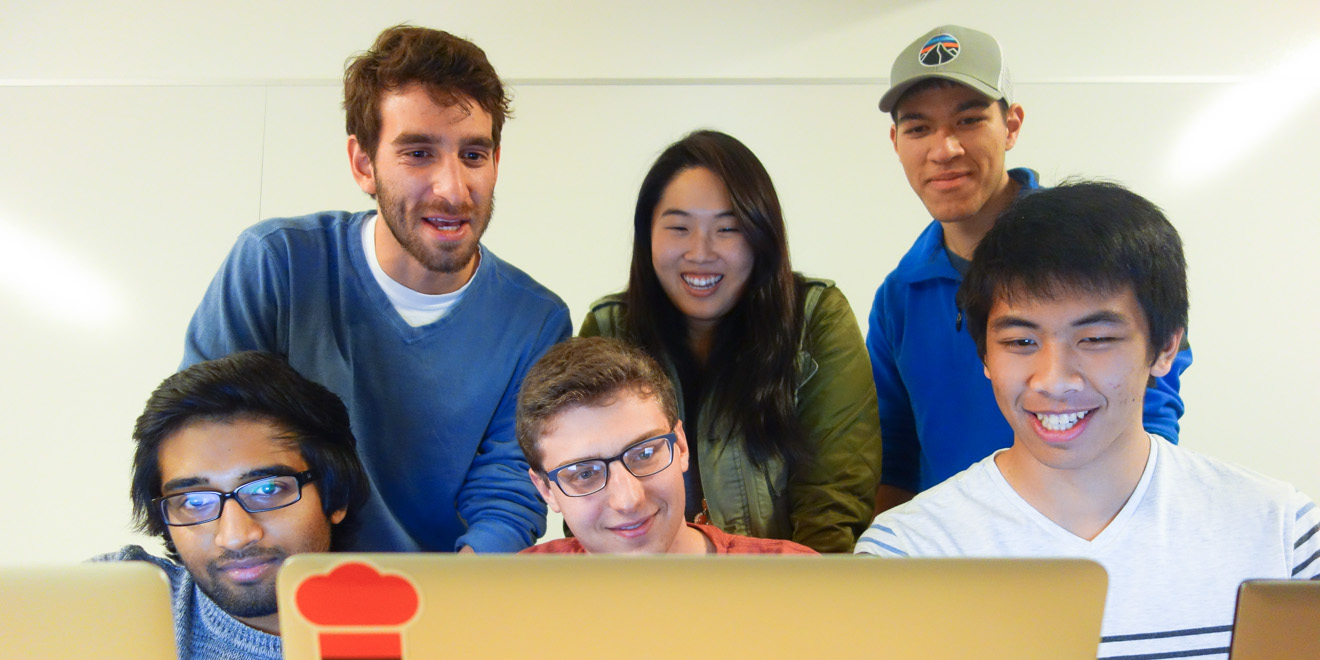
TreeHacks, Stanford’s first large-scale collegiate hackathon, will take place Feb. 20-22. The 36-hour event will bring together creators from across North America to “hack” together – collaborative work on technical projects that range from a web or mobile application to a piece of hardware.
Rishi Bedi ’17, TreeHacks’ co-director, spoke about the idea of redefining “hacking.”
“The hackathon movement has effectively redefined what it means to ‘hack,’” Bedi said. “It no longer means to nefariously break into a system but instead describes producing out-of-the-box solutions to interesting problems.”
The hackathon will take place at the Frances C. Arrillaga Alumni Center, with the opening and closing ceremonies at Cemex Auditorium. According to Jason Teplitz ’17, who is co-directing with Bedi and Russell Kaplan ’17, they expect about 500 hackers to attend, including 100 out-of-state participants and 200 in-state, non-Stanford programmers. The event is open to any Stanford student who wishes to attend.
Teplitz explained that TreeHacks received over 1,500 out-of-state applications and selected the top 100 applicants to fly out for the event. They are currently accepting applications for in-state, non-Stanford hackers and participants are selected based on their past work, their enthusiasm for hacking and their response to a coding challenge. TreeHacks will also fully reimburse accepted applicants for their travel expenses and provide buses for in-state participants.
The format of the event is typical of most hackathons: intensive coding or building, usually done in teams, followed by adjudication of prizes. Although smaller hackathons have taken place on Stanford campus before, TreeHacks aims to attract talented hackers from many different schools.
“Our goal for TreeHacks is really to be this lightning rod of activity for the hacking community,” Teplitz said.
Applying the skills learned in class
Teplitz said that he and Kaplan expected a large hacking scene when they arrived at Stanford as freshmen, but instead found it somewhat lacking. TreeHacks, hosted by a program of the Business Association of Entrepreneurial Students called BASES Hackspace, is part of an effort to expand the University’s already-growing hacking culture.
“We figured, let’s try and get it started, let’s make an environment where Stanford students come together to create things,” Teplitz said. “We have a ton of smart people, a ton of smart CS majors. So many people are really good at programming, engineering and problem solving. But they don’t quite know the first step.”
Teplitz emphasized the rewards of the hackathon experience for students. He and the rest of the TreeHacks team would like as many Stanford students as possible to participate.
“There’s something unique about being in a room and being told you have 36 hours to somehow make it work,” he said. “I think that’s a powerful moment when you realize, I had all the tools to do this, and now I can take this attitude of bringing my ideas to life.”
TreeHacks’ core internal team includes 15 Stanford students, and the event is organized by BASES Hackspace and Hack.Stanford(). Hackspace will be holding workshops run by BASES officers, as well as a few sponsors, prior to the event. In addition, Hackspace and Stanford ACM host weekly HackingHours every Tuesday evening at Old Union to build the University’s hacking community.
“One of the things that we’re trying to do at HackingHours is create a shared space for people to learn from each other,” Teplitz said. “When you’re learning a new technology or trying to do a project for the first time… your problems are problems someone else has already run into and struggled through.”
“If you’re sitting next to them and they can fix your problem in five minutes, you can go on learning the actual important things, and that’s really valuable,” Teplitz added.
According to Teplitz, one of TreeHacks’ main goals is to bridge the gap between skills learned in the classroom and practical applications of CS.
“That gap’s not nearly as wide as [people] tend to imagine it,” Teplitz said. “The goal here is to get Stanford students to feel like they can create something and apply what they’ve learned in class.”
Creating a diverse hacking community
Teplitz explained that the event’s other primary focus has been maintaining diversity and combatting the gender gap in the tech community.
“When we first were pushing out of state [applications]… we went online and shared it within hackathon circles – people that tend to go to these events,” Teplitz said. “The result was about 10 percent female applicants and 90 percent male applicants.”
Kate Park ’18, TreeHacks’ diversity outreach officer, spoke about the ways the team has tried to attract more female applicants. Park sent 900 private messages on Facebook to encourage more women to apply to the event.
“My role is to reach out to women and minorities to apply to TreeHacks [and] make sure they know about the event and at the event that they feel welcome,” Park said.
Park explained that the team has contacted organizations such as different universities’ Society of Women Engineers chapters and the National Center for Women in Technology. A Code of Conduct has also been laid out for during the hackathon, and the phrasing of TreeHacks’ advertising and application questions were carefully considered.
“The questions on the application were designed to be as inclusive as possible so as not to trigger any stereotype threat,” Park said. “The people in charge of the judges and mentors – we all want the diversity of the CS community reflected in those panels and those mentors.”
After the adjustments in advertising and the push for more female applicants, the final percentages for out-of-state accepted applicants were 30 percent female and 70 percent male. Park stressed the importance of increasing the number of female applicants overall rather than just accepting a disproportionate number of female participants.
“If you’re only picking more women just because they’re women, people start noticing a difference in skill or experience, but if more people are applying, you’ll be accepting more people naturally,” Park said.
Teplitz explained that diversity also includes programmers at different skill levels and with different interests. The hackathon itself will feature a hacker queue to assist programmers who need help or get stuck while working on their projects.
“We’re also partnering with the English department to do a CS+English prize to highlight the program there,” Teplitz said. “We’re hoping to partner with some of the other CS+X programs.”
Volunteers and mentors will be present onsite during TreeHacks, and Teplitz explained that the event also has multiple companies sponsoring the hackathon, including Yelp, Intel, Facebook, Emotiv Systems and several others.
“We’re hoping to get as much cool hardware as possible for people to play around with,” Teplitz said. “You can’t have this [hardware] available all the time, but for a weekend you can get a ton of it in one place, and then people can see what’s interesting and just play around.”
The registration form for Stanford students to participate in TreeHacks is now available online.
Contact Hannah Knowles at 15hknowles ‘at’ castilleja.org.
Kylie Jue contributed to this report.
